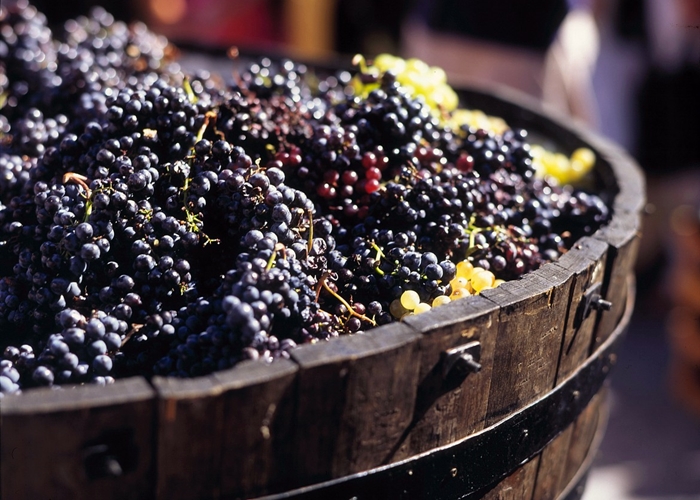The transformation of winemaking: a journey through time
Keys to understanding how wine is made today and how it was made in the past

Though the elementary process of wine production has largely remained the same since the days of the Romans, it was during the Middle Ages that the first significant variations were introduced, forever changing the flavor profiles of our modern wines. The winemaking process, as old as the beverage itself, has been refined and modernized over the centuries. Yet, at its core, the method remains the same: fermenting grape juice, with every stage of the process influencing the final result.
Winemaking can be likened to a large rope comprised of countless smaller threads. If one of these threads is weak or flawed, the strength of the entire rope is compromised. Similarly, in winemaking, the final quality depends on the quality of all its components and phases of production. The primary prerequisite to making a good wine is procuring high-quality grapes.
Viticulture: The First Step to Quality Wine
Over time, the cultivation of vineyards has become more sophisticated. Modern vineyards are often impeccably organized, the vines arranged in neatly demarcated rows. Yet, in the ancient world, what we might call "promiscuous" agriculture prevailed, where there was no systematic cultivation. Vines grew wildly, entwined with other plants, and harvesting them required significantly more labor.
The shift to dedicated viticulture resulted in a fruit of markedly better quality. As the cultivation of vines took root, the need for improved techniques emerged. An essential factor in enhancing cultivation was the weather, an uncontrollable variable crucial to healthy fruit. Like their predecessors, contemporary viticulturists continue to celebrate successful harvests and recognize that, despite advancements, they are still at the mercy of the elements.

Viticulture requires humility. Until the grapes are harvested, pressed, and the wine stored, things can go wrong. Rain can disrupt harvest, pests can destroy crops, and unexpected weather changes can affect the grapes' quality. Every year, viticulturists reinvent their winemaking methods, producing a unique wine each time.
Winemaking: A Process Teeming with Life
Once the grapes are harvested, the juice extraction commences. Today, this is achieved through machinery, but historically, the grape must was obtained by foot-treading. Human feet, with their padded, soft forms and the warmth they generated, were beneficial for winemaking. The weight of a person, combined with the foot's shape, allowed for juice extraction without breaking the grape seeds, improving the wine's flavor. The heat from the human foot facilitated spontaneous fermentation, activating yeasts present on the grapes.
The downside to foot-treading was the lack of hygiene, leading to wine contamination with various bacteria and microorganisms that could compromise quality or spoil the wine. Modern technology has replaced these functions with machinery, eliminating contamination issues and achieving higher quality wines.
Fermentation: The Essence of Quality Wine
The grape juice's transformation into wine is a natural process known as fermentation. Yeasts, small microorganisms present in the grape must, feed on its sugars and release alcohol. As living beings, they consume until there's no more sugar, after which they die off - known as lees. Temperature plays a crucial role in this process; too cold, and the yeasts remain dormant, disrupting the fermentation.
In the last two centuries, scientists like Louis Pasteur have significantly expanded our understanding of yeasts. In the past, fermentation was thought to be divine work. Earlier, yeasts were derived from vineyards, present on the grape skins after harvest. Sometimes, these yeasts were unsuitable and produced unpleasant aromas and flavors in the wine.
Today, laboratories select and cultivate the best yeasts, sold to wineries to add directly to the grape must. This selective cultivation has led to an improvement in wine quality but also sparked debates about flavor standardization, causing wines from the same region to taste similar.
Fermentation occurs over several days in large vats. For quality wine production, the temperature must remain stable, ensuring the yeasts continue to feed and don't interrupt their life cycle. Technology has made it easier to maintain consistent temperatures, an aspect that was more challenging in the past.
Once yeasts convert part of the sugar into alcohol, the must becomes wine. At this stage, the wine starts to develop its final characteristics. For white wine, fermentation occurs by separating the grape skins at the beginning of pressing. For red wine, the skins are fermented with the must as the red color derives from the grape skins. The wine is then filtered and clarified before aging in steel or wooden vats. This process can range from a few weeks to several years.

Winemaking is a blend of science and art, a process as much about the journey as the destination. Through centuries, from the days of the Romans to the present, this journey has seen many changes and refinements. Yet, the essential core - the fermentation of grape juice into a delicious elixir - remains the same. Just as wine matures and develops character with time, so too has the winemaking process grown and evolved, enhancing the quality and variety of the wines we enjoy today.
Founded in 2007, Vinetur® is a registered trademark of VGSC S.L. with a long history in the wine industry.
VGSC, S.L. with VAT number B70255591 is a spanish company legally registered in the Commercial Register of the city of Santiago de Compostela, with registration number: Bulletin 181, Reference 356049 in Volume 13, Page 107, Section 6, Sheet 45028, Entry 2.
Email: [email protected]
Headquarters and offices located in Vilagarcia de Arousa, Spain.